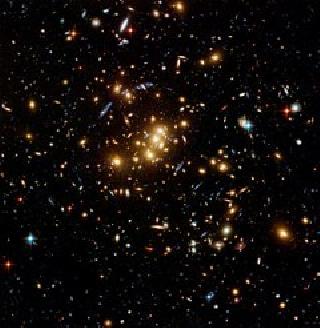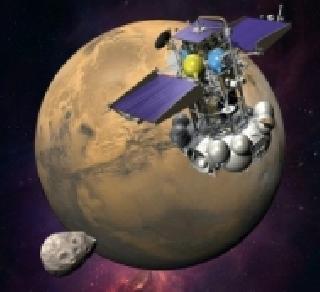
WASHINGTON (AFP): International astronomers said Monday they have created the largest map of dark matter ever observed in the Universe, using data from potent telescopes that scanned 10 million galaxies.
The mysterious substance is believed to make up about a quarter of the Universe, but its nature is a puzzle because it can be detected only indirectly through the gravitational pull it exerts on visible matter.
To make the new map, astronomers studied how light emitted from galaxies is distorted as it passes by big clumps of dark matter in its travel toward Earth.
The result is an "intricate cosmic web of dark matter and galaxies that spans more than one billion light years," said the findings by astronomers at the University of British Columbia and University of Edinburgh.
"It is fascinating to be able to 'see' the dark matter using space-time distortion," said Ludovic Van Waerbeke of UBC who worked on the project, known as the Canada-France-Hawaii Telescope Lensing Survey (CFHTLenS).
"It gives us privileged access to this mysterious mass in the Universe which cannot be observed otherwise."
It looks like "a network of gigantic dense (white) and empty (dark) regions, where the largest white regions are about the size of several Earth moons on the sky," said the findings, presented at the annual meeting of the American Astronomical Society in Austin, Texas.
The data came from the five years of images filmed as part of the Canada-France-Hawaii Telescope Legacy Survey, taken from a wide field imaging camera on a massive telescope in Hawaii.
It included galaxies that were typically about six billion light years away, and captured light that was emitted when the Universe was six billion years old, or about half its current age today.
"By analysing light from the distant universe, we can learn about what it has travelled through on its journey to reach us," said Catherine Heymans, a lecturer in the University of Edinburgh's School of Physics and Astronomy.
"We hope that by mapping more dark matter than has been studied before, we are a step closer to understanding this material and its relationship with the galaxies in our universe."
Previous attempts to map dark matter have largely relied on computer simulations.
Astronomers involved with the project said over the next three years they intend to image more than 10 times the area just mapped.
 Previous Article
Previous Article Next Article
Next Article













The Indian Air Force, in its flight trials evaluation report submitted before the Defence Ministry l..
view articleAn insight into the Medium Multi-Role Combat Aircraft competition...
view articleSky enthusiasts can now spot the International Space Station (ISS) commanded by Indian-American astr..
view article